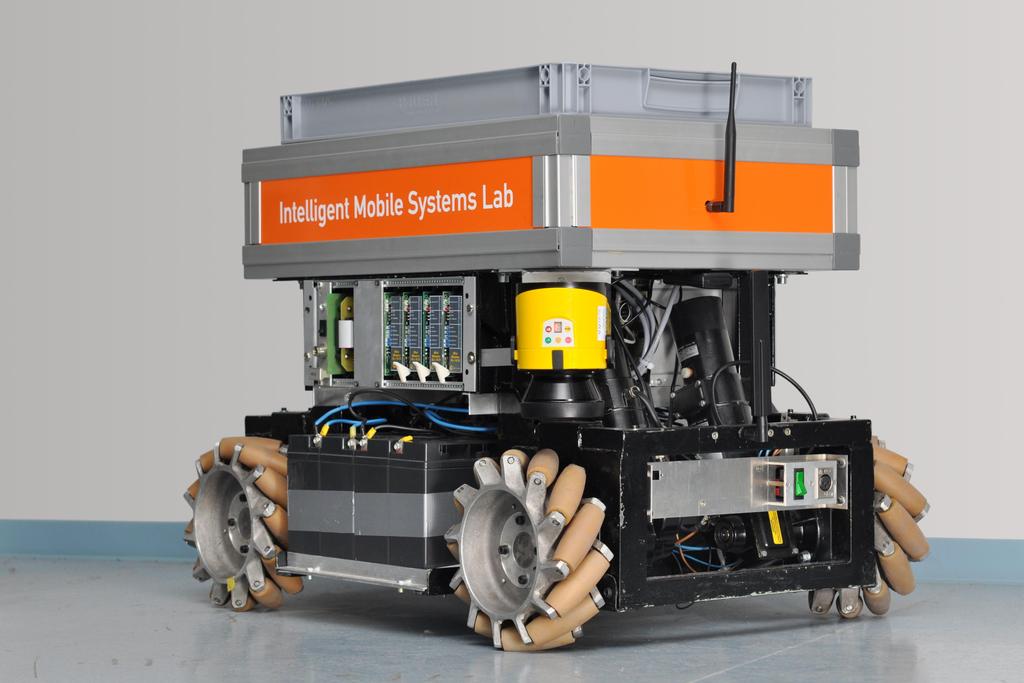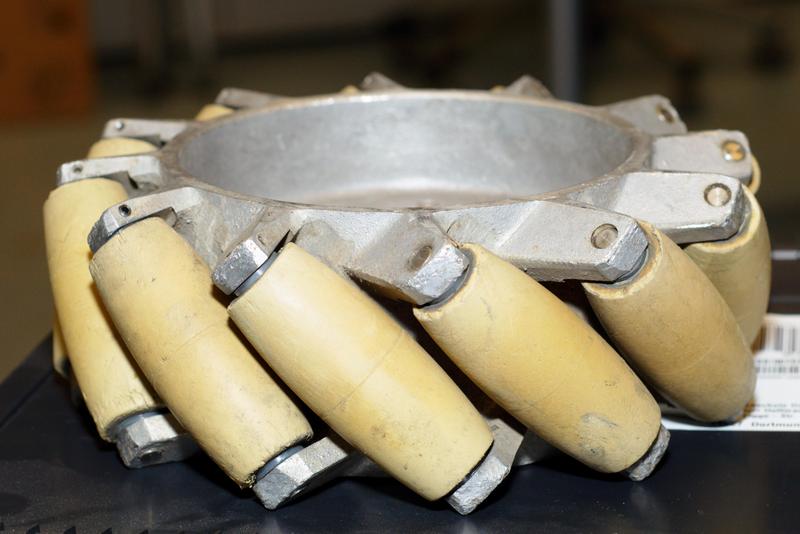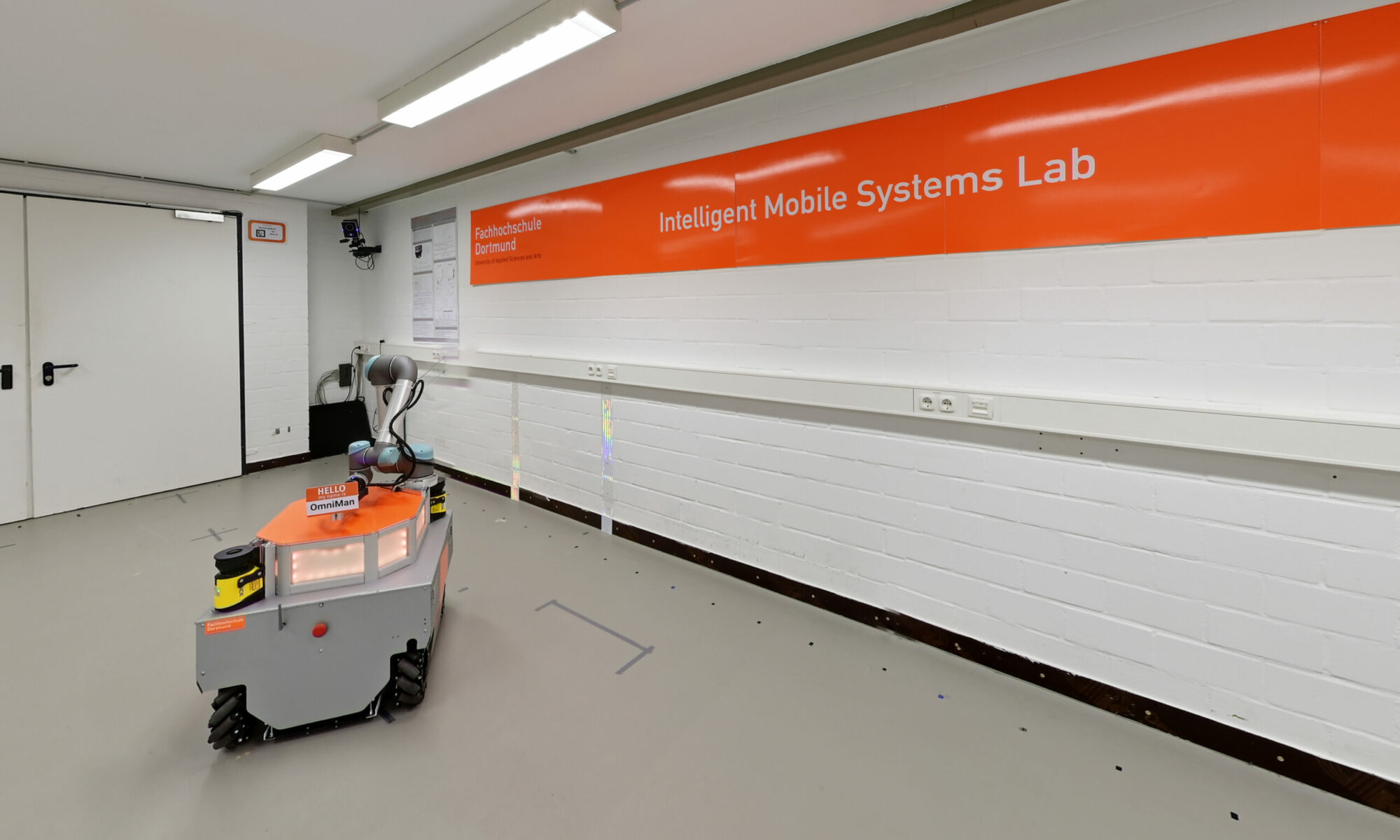
In this project a omnidirectional robot was developted, which can transport loads in logistic applications. To live up to expectations in modern production and distribution systems onto smaller transport units, the robot is developted to transport Euro-Boxes. It is localised and navigated by a realtime radio based localisation system, which was developted at the University of Applied Sciences and Arts in Dortmund. The localisation system uses technologies, that are already needed for the operation of the robot, so costs can be reduced. The radio transport technology is the key feature, which is used in addition to the communication of driving commands and state messages for the localisation of the robot. This localisation is fused with other sensors of the robot to improve the accuracy of the position estimations. With the additionally installed laser rangefinders accurate docking procedures at the load stations can be done. The laser rangefinders with safety function are primarily used for personal safety. The whole system has the advantage of being more flexible by lower costs than conventional automated guided vehicles.
Technical description

The mobile robot was designed for logistic applications and has so called Mecanum wheels. Using the Mecanum wheels the robot can turn out of the stand in all directions and so all given positions can be reached directly. Mecanum wheels allow, without any additional steering, omnidirectional driving procedures. This procedures are possible, because of rollers that are mounted on the circumference of the wheel. This rollers are mounted in an angle of 45° to the axis of the wheel (see in the figure beside). The rollers are not driven and can spin freely around their axis. The individual control of every wheel makes it possible to move like a hover craft vehicle.
For navigation and localisation in realtime a radio based localisation system is used, which was developed at the University of Apllied Sciences and Arts in Dortmund. This system consist of wireless sensor nodes on which a nanoLOC tranceiver chip, developed by Nanotron Technologies, is mounted. The position of the robot is estimated using wireless sensor nodes, that are fixed placed. A mobile sensor node, named Tag, is mounted on the robot. The Tag is a internal developted system which has additional movement sensors. For collision avoidance and docking procedures at the load stations, the robot is equipped with two 270° laser rangefinders for safety applications.
The video shows the use of a mobile robot for logistic tasks. Radio based localisation technology makes it possible to build inexpensive vehicles, that do not need additional expensive sensor systems. The self localisation allows the simultaneous use of multiple vehicles, because it is computed locally on the robot. Furthermore the use of Mecanum wheels makes it possible to navigate the robot through tight passages, so that it can operate in different enviroments. Another application for such a system could be for example the transportation of heavy loads in manufacture halls. Thanks to the radio based localization the backfittings for halls are not very expensive. Because of the high agility the robot could also be used in office buildings or even in hospitals.

